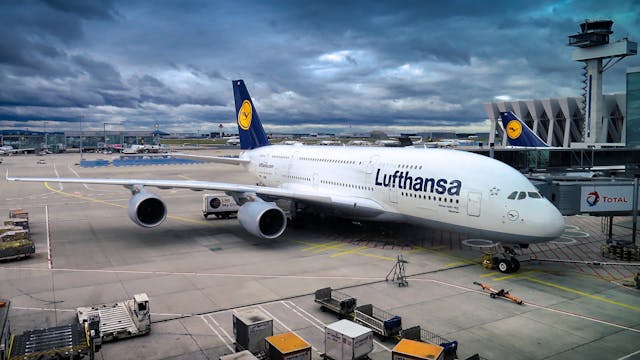
Why are more plane crashes survivable? Because of technology, training, the way the planes are laid out, and the materials the planes are made of.
Many people have a fear of flying and a lot of people have an image that flying is very dangerous. This couldn’t be further from the truth. This fear is probably held because the media pick up on plane crashes and give them a lot of publicity. When there is a plane crash, several hundred people could have been killed at once and the media focus on that. What the media don’t mention is the number of planes that fly vs the number that crash. They don’t talk about the number of people that fly compared to the past and they don’t talk about all of the plane crashes where there are no fatalities. These things aren’t of interest to them and don’t make the news.
Let’s start by looking at some statistics. In 2023, 8.6 billion people flew somewhere in the world. Those people were carried on 37.7 million planes. In 2023, there were 82 plane crashes and 229 people were killed. That means 0.00021% of all the airplanes that flew crashed and 0.0000026% of the people that flew died. When airplanes crash they are big news, but people don’t think about the sheer number of airplanes and people that fly. These numbers have declined year on year. In 1970, there were 298 plane crashes and 2,226 deaths. That is a far higher number and there were far fewer planes flying at the time, so your risk of dying was higher. So, what has changed? Why are plane crashes fewer and more survivable?
The first reason is that technology has improved. Every time there is a crash, there is an investigation and whatever caused that crash is fixed, or a way to deal with it is found. Also, increasing automation in the cockpit has reduced the number of accidents. It is thought that 53% of all plane crashes are caused by pilot error. Many people don’t like the idea of automation and they don’t want to think that a machine is flying their plane, but machines are demonstrably safer than humans. If most of the tasks are given to machines, it frees pilots up to concentrate more and deal with problems if they arise.
The second thing is the training. Pilots undergo training on very complex and realistic simulators that can realistically represent pretty much any condition that might appear on a plane. Cabin crew also undergo very realistic training and they are taught about situations that have actually happened, so they know what to do if it occurs again. The pilots and the cabin crew are also trained in something called Cockpit Resource Management. This allows people not to follow the hierarchy of the airplane system and to speak up if they see something or if they have valuable information. The pilot cannot know everything, after all. The cabin crew are allowed to act unilaterally with the information they have at their disposal. Passenger training is also a factor. In the 1970s, flying was very rare and if there was an accident, most people wouldn’t know what to do. These days, flying is a regular occurrence and most of us have flown many times. If there is an accident, we are more prepared than people were.
The third thing is the way the plane is laid out. Airlines obviously want to get as many people on a plane as possible so as to maximize their profits, but they also need to be able to get those people off as quickly as possible. The law says that any airline must be able to get all of the passengers off a plane in 90 seconds. To do this, there are several things that aircraft have done. Emergency lighting is brighter. Emergency exits are more clearly marked. Safety videos have been made more interesting, so that people watch them.
And, lastly, the materials the planes are constructed of have improved. The seats have been strengthened. They can now withstand a force of 16G instead of 9G. A lot of injuries are caused by seats collapsing a crushing people. Now the seats are stronger, they will provide a lot of protection. The planes are constructed from safer materials as well. They used to be made of aluminium, steel, and other metals, but these days they are made of carbon fiber and epoxy resin. Twenty years ago, fires up to 600℃ would destroy a plane. New materials can stay intact up to 2,000℃. Jet fuel burns at high temperatures that would quickly consume older planes. Modern planes stay together longer, giving people more time to get out. As well as that, modern materials produce less smoke and toxic gases. Smoke is a bigger killer than fire, and all of these things give the crew more time to get the passengers off the plane. And this is what I learned today.
Photo by Pixabay: https://www.pexels.com/photo/white-and-blue-lufthansa-airplane-358220/
Sources
https://nypost.com/2024/01/13/news/why-airplanes-crashes-are-now-safer-than-ever
https://www.iata.org/en/pressroom/2024-releases/2024-02-28-01
https://www.oag.com/blog/air-travel-statistics-2023
https://en.wikipedia.org/wiki/Aviation_accidents_and_incidents
